Japan first traded with the West here, and the influences are still strong
Curving around the north of Nagasaki Prefecture are Sasebo and Hirado, a haven for water and nature lovers alike.
Don’t Miss
• Sasebo Wharf: Enjoy a drink as you look out over the beautiful waters of Sasebo Bay
• Kujukushima: Head out on a pleasure boat and enjoy the scenic views of Sasebo’s famous 99 islands
• Sasebo Zoological Park: Feed baboons, ring-tailed lemurs, goats, sheep, raccoons and giraffes
• SaSpa Onsen: A local onsen in the northwestern part of Sasebo that many American sailors fail to find
How to Get There
Sasebo can be reached by JR trains from Fukuoka and Nagasaki. From there, Hirado is a short bus ride away.
JR limited express trains run from Hakata Station in Fukuoka. This two-hour journey will set you back around 4,000 yen. You can also get the hourly JR Seaside Liner trains from Nagasaki. A 100-minute journey for 1,650 yen one way. Nagasaki Airport and Sasebo are connected by airport buses (75 minutes, 1,400 yen one way).
Sasebo
Now an internationally important city, Sasebo was once a humble fishing village controlled by the Hirado Domain until shortly after the Meiji period.

It was around this time that the Admiral of the Imperial Japanese Navy, Heihachiro Togo, saw promise in Sasebo. Seeing the protected deep-water harbor, nearby coal mines, and its geographic proximity to China and Korea, he took the initiative. Sasebo Navy District was founded in 1886. This harbor came to play an important part as a major port for the Japanese navy during the First Sino-Japanese War and Russo-Japanese War. It remained a major navy base until the end of World War II.
The Sasebo we know today was founded on April 1, 1902. Although it was spared an atomic bomb, Sasebo was one of the original 17 possible targets and suffered heavy damage during World War II.
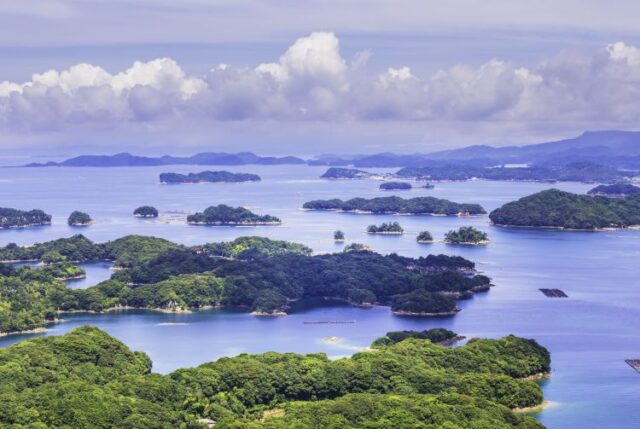
After the end of World War II, the United States Navy took over part of Sasebo base and formed the U.S. Fleet Activities Sasebo in 1946.
Because of the U.S military base, Sasebo has seen a huge rise in American influences over the past few years. The most famous of these is Sasebo’s acclaimed Sasebo Burger. Soft and sticky buns, Japanese beef, and an abundance of lettuce and sauce—these together make the Sasebo burger delicious.
If you can’t make it up to Sasebo, you can usually find these delicious burgers around festival stalls throughout Nagasaki Prefecture.

Hirado
Connected to the mainland Nagasaki by a red bridge, Hirado is just a short drive from Sasebo. Hirado was once the port of call for ships between the Asian mainland and Japan as far back as the Nara Period (710-784).
Most of this trade took place at the Hirado Dutch Trading Post, built in 1609, which you can still visit today.
Similarly to Sasebo, Hirado has also been influenced heavily by foreign visitors—primarily the Dutch. Hirado still retains its own style of Japanese culture, however, making it a unique and fascinating place to visit.

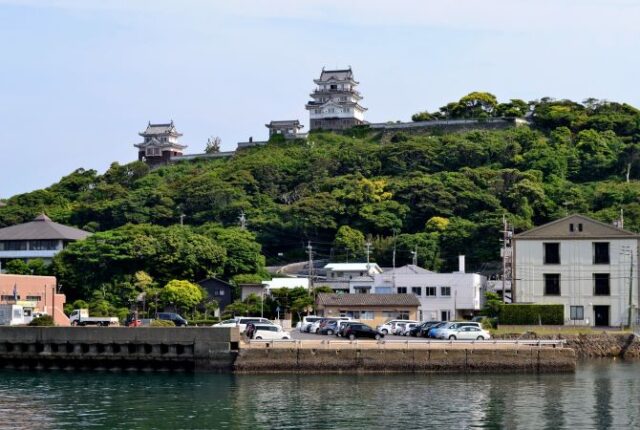
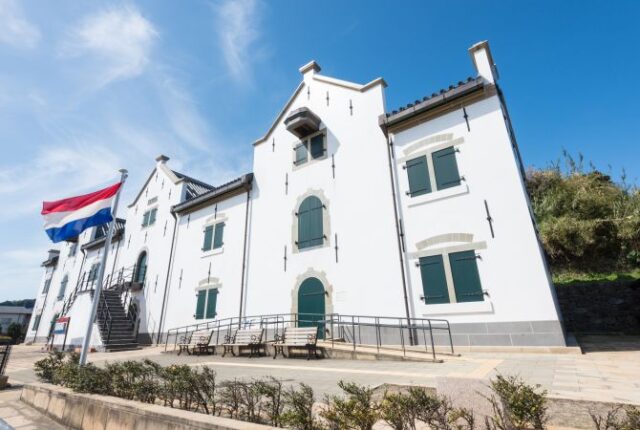
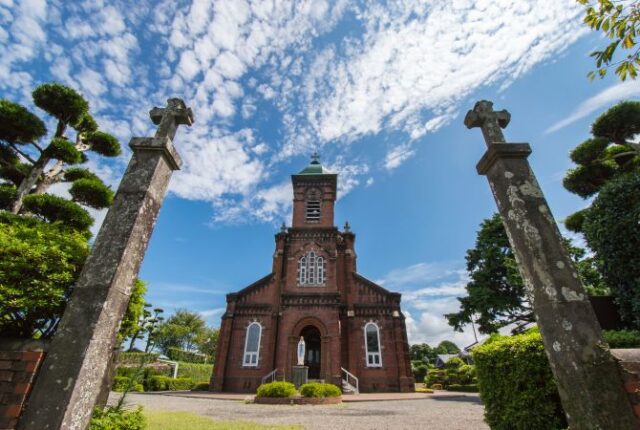
In addition to the Trading Post, try visiting Hirado Castle, once the home of the Matsura Clan. Offering gorgeous views of Hirado Port and the ancient forest of Kurokojima Island, the castle is the perfect place to look out over Hirado.
If it’s culture you’re after, Hirado has it in abundance. Rich with festivals famous across Japan, you should be able to take part in one regardless of what time of year you visit. Perhaps the most notable is the Tabira Jangara, a harvest dance where the dancers keep their faces hidden throughout the performance. Because of it’s elegance and cultural importance, this dance has been listed as a National Intangible Cultural Property.
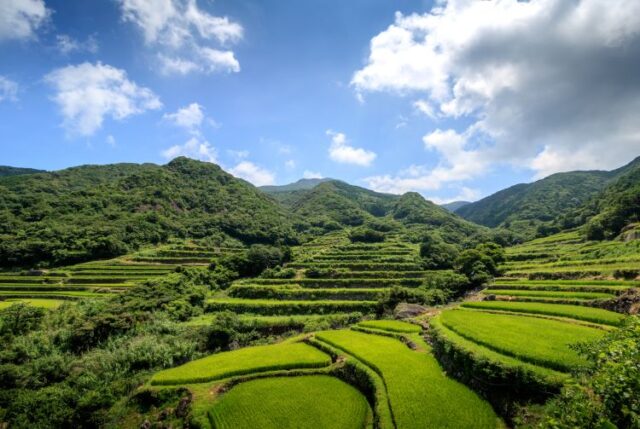
For nature lovers, the Kawachi-toge pass is a beautiful walk, offering a uniquely panoramic view of the island. On a clear day, you may even be able to spot Iki and Tsushima off into the distance. Kawachi-toge pass is perfect for a hike on a beautiful day.
In spring Hirado holds the Hirado Thousand Lantern Festival. Said to celebrate the renewal of spring, the festival is held over two days in April. Come see Fumonji Temple illuminated with stone and bamboo lanterns. Each bamboo lantern is hand carved by local artisans.
The city is alive, with food stalls lining the streets and live music. Come walk the winding cobbled path to the temple and enjoy this beautiful festival.
If you arrive early enough, you can get a prime view of Jigenzakura, a 140-year-old giant sakura tree—a sight not to miss.

